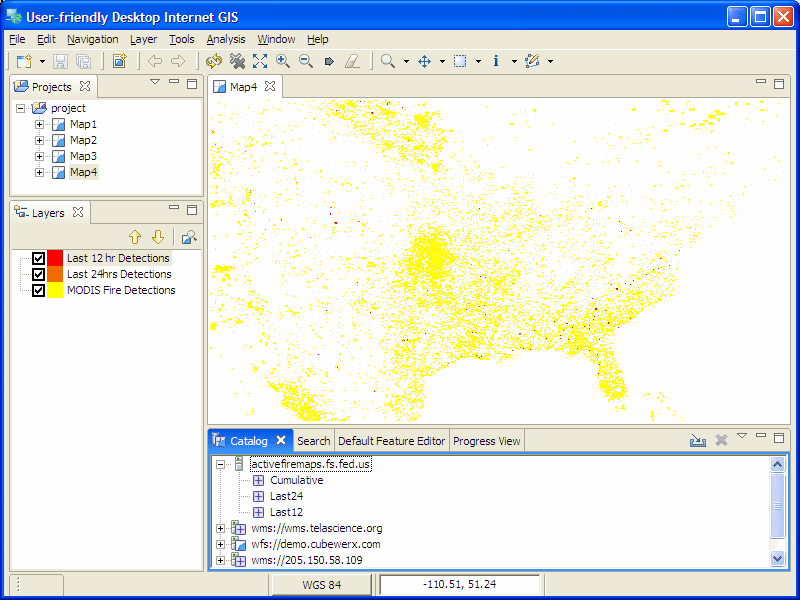

This paper presents a methodology to systemically and objectively calibrate, verify, and compare different models and model performance indicators in order to identify and select the models whose behavior is the most reliable for particular case studies. Reliable model applications involve automatic parameter calibration, objective quantification of the quality of susceptibility maps, and model sensitivity analyses. Two main approaches are commonly used: statistical or physically based models. Predicting locations that might be susceptible to shallow landslides is a complex task and involves many disciplines: hydrology, geotechnical science, geology, hydrogeology, geomorphology, and statistics. Rainfall-induced shallow landslides can lead to loss of life and significant damage to private and public properties, transportation systems, etc. This chapter demonstrates the capabilities of the uDig Spatial Toolbox, which range from the extraction of landform parameters to more advanced DEM manipulations and hydro-geomorphological modelling. JGrasstools and uDig are developed in Java, which ensures their portability in all operating systems running a Java Virtual Machine.
UDIG SPOSNORSHIP PROFESSIONAL
They are designed to meet the research needs of academics and scientists, but it remains simple enough in operation to be used for student instruction and professional use. A large number of tools are included in the toolbox for terrain analysis, river network delineation, and basin topology characterization. The Spatial Toolbox for uDig is a specialized toolset for topographical analysis, geomorphometry and hydrology. Recently, uDig was integrated with significant resources for environmental analysis.
UDIG SPOSNORSHIP FREE
JGrasstools in uDig GIS, is, instead free and Open Source.

UDIG SPOSNORSHIP SOFTWARE
Several commercial GIS software packages are available which provide terrain analysis functionalities for hydrogeomorphology, however, these are often prohibitively expensive. Remember that a pull request is the start of a conversation! Build InstructionsĬheck out the branch you wish to work with (or fork as you see fit).Geographical Information Systems (GIS) are now widely used in hydrology and geomorphology to automate basin, hillslope and stream network analyses. There are two ways to take part: indirectly using github pull requests and directly by obtaining commit access. Frank Gasdorf Jesse Eichar Jody Garnett Mauricio Pazos us in working on uDig: Contributing.GIS ready, providing the framework on which complex analytical capabilities can be built, and gradually subsuming those capabilities into the main application.Internet oriented, consuming standard ( WMS, WFS, WCS) and de facto (GeoRSS, KML, tiles) geospatial web services and,.
UDIG SPOSNORSHIP MAC



 0 kommentar(er)
0 kommentar(er)
